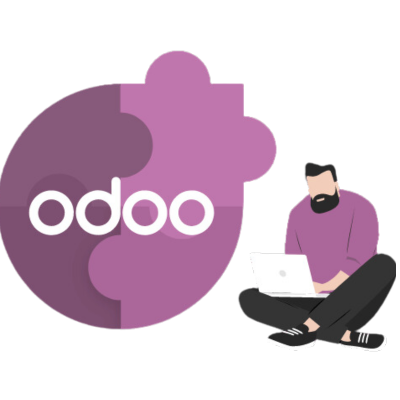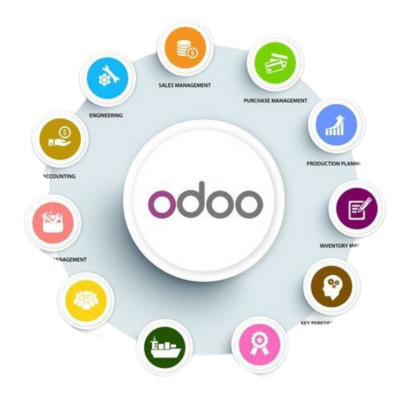Introduction
As businesses grow and expand, the demand for scalable and efficient software solutions becomes paramount. Multi-tenant applications, which allow multiple customers (or tenants) to use a single instance of software while keeping their data isolated, are an excellent choice for achieving scalability and cost efficiency. Odoo, a leading open-source ERP platform, provides robust tools and frameworks to build multi-tenant applications.
In this comprehensive guide, we’ll explore the process of building a multi-tenant application with Odoo, the tools and strategies involved, and the benefits it brings to businesses. We’ll also highlight the critical role of Odoo development companies, Odoo development consultancies, and other industry experts in achieving seamless implementation
Understanding Multi-Tenancy
What Is Multi-Tenancy?
Multi-tenancy is a software architecture where a single instance of an application serves multiple tenants. Each tenant’s data is isolated, ensuring privacy and security, while the infrastructure remains shared to optimize resources.
Benefits of Multi-Tenancy
- Cost Efficiency: Shared infrastructure reduces hardware and maintenance costs.
- Scalability: Easily add new tenants without significant overhead.
- Centralized Management: Simplify updates, backups, and monitoring.
- Customization: Tenants can have individualized configurations within the same application.
Boost Your Business with Expert Odoo Development Services!
Odoo POS development company, we specialize in creating customized point-of-sale solutions that integrate seamlessly with Odoo to enhance retail operations.

Why Choose Odoo for Multi-Tenant Applications?
Odoo’s modular architecture and extensive customization capabilities make it an ideal platform for multi-tenant application development. Key advantages include:
- Flexible Framework: Adapt Odoo to various industries and business models.
- Robust Security: Built-in mechanisms ensure data isolation and protection.
- Cost-Effectiveness: Open-source nature reduces licensing costs.
- Seamless Integration: Use Odoo ERP Integration to connect with third-party tools.
Working with an experienced Odoo development agency ensures you fully leverage these benefits.
Key Considerations for Building a Multi-Tenant Application
1. Data Isolation
Each tenant’s data must be securely separated. In Odoo, this can be achieved using:
- Database Isolation: Each tenant has a separate database.
- Table Isolation: A single database with tenant-specific tables.
- Row-Level Isolation: A single table with tenant identifiers for data separation.
2. Scalability
The application must handle a growing number of tenants without performance degradation. This involves:
- Optimizing database queries.
- Using load balancers.
- Implementing caching mechanisms.
3. Customization
Allow tenants to personalize their workflows, modules, and configurations. Collaboration with Odoo development firms ensures seamless customization.
4. Security
Protect tenant data with:
- Role-based access controls.
- Data encryption.
Regular security audits by an Odoo development consultancy.
Steps to Build a Multi-Tenant Application with Odoo
Step 1: Install and Configure Odoo
- Download the Odoo source code from the official repository.
- Install dependencies using:
pip install -r requirements.txt - Configure PostgreSQL for database management.
- Set up your Odoo instance with a master database.
Step 2: Implement Multi-Tenancy
Database Isolation
- Create a unique database for each tenant.
- Use Odoo’s multi-database feature to manage tenant databases.
Modify the configuration file to support multi-database routing:
db_filter = ^%d$
Row-Level Isolation
- Add a tenant identifier column to shared tables.
- Use Odoo’s record rules to restrict data access based on the tenant identifier.
Step 3: Customize Modules for Tenants
- Create tenant-specific modules or customize existing ones.
- Use Odoo Studio or collaborate with Odoo development services for advanced customizations.
- Test modules in a staging environment to ensure compatibility.
Step 4: Enable Tenant-Specific Configurations
- Allow tenants to select modules and features during onboarding.
- Store configuration settings in tenant-specific records.
Step 5: Optimize Performance
- Use indexing and caching to speed up database queries.
- Deploy a load balancer to distribute traffic across servers.
- Monitor performance with tools like Grafana or New Relic.
Get Expert Odoo Developers Today!
Hire skilled Odoo developers to customize, implement, and optimize your ERP for seamless operations and enhanced business productivity.

Tools and Technologies for Multi-Tenant Odoo Development
1. Docker
Containerize your Odoo instance for easy deployment and scaling.
2. Nginx
Use Nginx as a reverse proxy to manage traffic and enhance security.
3. PostgreSQL
Leverage PostgreSQL’s advanced features for data isolation and performance optimization.
4. Git
Version control with Git ensures efficient collaboration and change management.
5. Odoo.sh
Odoo’s cloud platform simplifies deployment, testing, and scaling.

Challenges and Solutions
Challenge 1: Data Security
Solution: Implement robust encryption and access controls. Conduct regular audits with an Odoo development consultancy.
Challenge 2: Performance Issues
Solution: Optimize database queries and use load balancers to handle traffic.
Challenge 3: Onboarding New Tenants
- Solution: Automate the onboarding process with scripts and tenant-specific templates.
Challenge 4: Customization Conflicts
- Solution: Isolate tenant customizations to prevent conflicts. Collaborate with Odoo development firms for expert guidance.
Benefits of Multi-Tenant Applications in Odoo
1. Cost Savings
Shared resources reduce infrastructure costs, making multi-tenancy an economical choice for businesses
2. Ease of Maintenance
Centralized management simplifies updates, backups, and monitoring
3. Enhanced Scalability
Easily accommodate new tenants without major architectural changes.
4. Customizability
Partnering with an Odoo development company or Odoo service provider ensures:
- Expert Odoo Solutions: Tailored to your business model.
- Odoo ERP Integration: Seamless connectivity with third-party tools.
- Odoo Development Services: End-to-end development, deployment, and support.
- Ongoing Maintenance: Ensuring performance and security over time.
Expert Odoo ERP development company for tailored business solutions.
An Odoo ERP development company offers tailored solutions to streamline business operations, enhance productivity, and drive growth.

Conclusion
Building a multi-tenant application with Odoo is a strategic choice for businesses aiming to provide scalable and cost-effective solutions. With its flexible framework, robust security, and extensive customization options, Odoo empowers businesses to deliver exceptional tenant experiences.
By partnering with experienced Odoo development agencies and leveraging Odoo Development Services, businesses can streamline the development process and ensure long-term success. Whether you’re a startup or an established enterprise, multi-tenancy with Odoo is the key to staying competitive in today’s dynamic market.

















